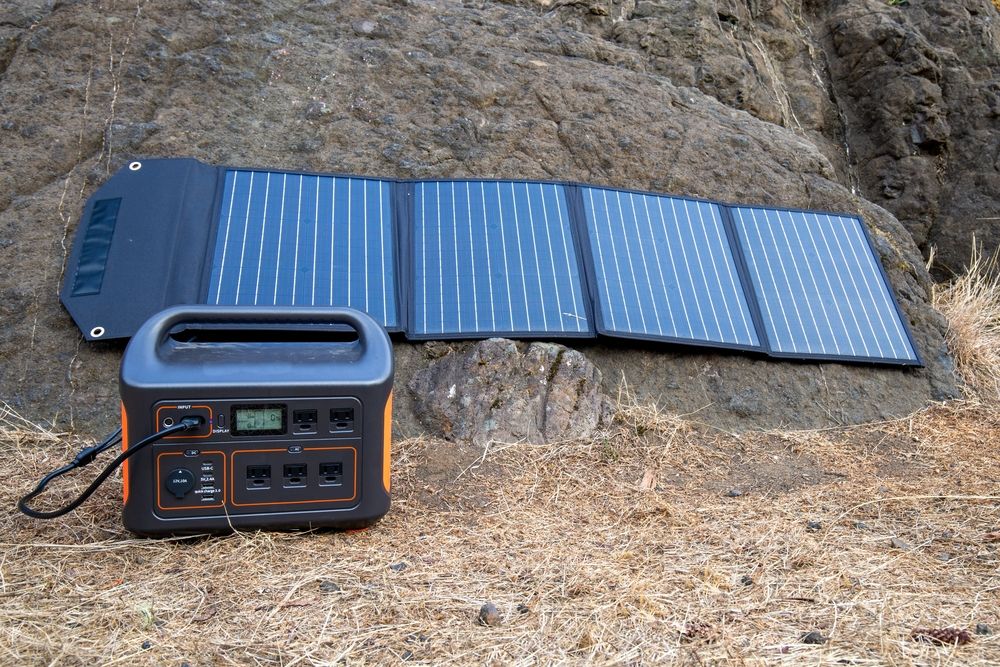Whether you’re camping off the grid, preparing for a storm, or simply keeping your electronics charged on a road trip, a portable power station offers peace of mind and reliable energy. These battery-powered devices are more than just oversized chargers — they can power everything from smartphones and laptops to CPAP machines, mini-fridges, and even small appliances.
But with a growing number of models on the market, finding the right one can be overwhelming. Capacity, ports, charging speed, and portability all matter — especially in emergency situations where time and power are critical. This guide will help you choose the best portable power station based on your travel habits, household needs, and emergency plans.
1. Understand What a Portable Power Station Does
A portable power station is essentially a large rechargeable battery pack with multiple output ports. Unlike gas-powered generators, it operates silently, doesn’t produce emissions, and can be used indoors.
What It Can Power:
-
Phones, tablets, and laptops
-
Fans, routers, and LED lights
-
CPAP machines and medical devices
-
Mini-fridges, drones, or cameras
-
Small kitchen appliances in short bursts
Power stations are especially useful during blackouts, car camping, van life, or remote job sites where traditional power sources are unavailable.
2. Choose the Right Capacity for Your Needs
Capacity is measured in watt-hours (Wh) — the total amount of energy the station can store. Your needs will depend on what devices you want to power and for how long.
Capacity Guide:
-
200–300Wh: Great for charging phones, tablets, headlamps, and a few small electronics.
-
500–700Wh: Suitable for CPAP machines, laptops, mini-fridges (for a few hours), and small appliances.
-
1,000Wh+: Best for extended outages, family trips, or RV setups with higher power demands.
To estimate your needs, calculate the wattage of your devices and multiply by the number of hours you want them to run.
3. Consider Output Options and Port Variety
A good power station should have a wide selection of ports to accommodate different devices — especially if you’re using it for both emergencies and daily use.
Common Output Types:
-
AC Outlets (110V/220V): For appliances, TVs, or medical equipment.
-
USB-A and USB-C: For phones, tablets, headphones, and smaller devices.
-
12V Car Port: Ideal for portable coolers or inflators.
-
DC Barrel Ports: Used with some routers and specialty electronics.
Look for at least one pure sine wave inverter for sensitive electronics, which ensures stable and clean AC power.
4. Check Input and Recharge Options
Charging speed and flexibility matter, especially if you’re relying on your power station during extended emergencies or off-grid travel.
Charging Methods:
-
Wall Outlet (AC): Fastest and most reliable when at home.
-
Car Charger (DC): Useful during travel, but slower.
-
Solar Panels: Essential for off-grid or extended outages. Check solar input compatibility (often up to 100W–200W+).
Some models offer dual input charging (AC + solar or AC + car), significantly reducing charging time. Fast-charging models can recharge in as little as 1–2 hours.
5. Evaluate Size, Weight, and Portability
If you’re carrying your power station to campsites, on hikes, or through your house during a blackout, weight and design become key considerations.
Portability Tips:
-
Under 10 lbs (4.5 kg): Lightweight, ideal for solo travelers or minimal needs.
-
10–20 lbs (4.5–9 kg): Balanced for moderate power and ease of carrying.
-
20 lbs and above: High capacity but may require wheels or handles for easier movement.
Some power stations are designed with stackable batteries or rugged, weather-resistant casings to handle outdoor use better.
6. Look for a High-Quality Display
A good LCD or LED display makes a big difference when tracking power usage, especially during an emergency or trip.
Features to Look For:
-
Battery percentage remaining
-
Input/output wattage
-
Time remaining until fully charged or depleted
-
Error messages or temperature alerts
Real-time feedback helps you manage your power more efficiently and extend battery life in critical situations.
7. Choose Based on Noise and Safety
One of the main advantages of a portable power station over gas generators is that it’s silent and safe to use indoors. Still, safety certifications and cooling systems matter.
Safety Features to Check:
-
Overload protection
-
Short circuit prevention
-
Overheat and overcharge protection
-
UL or CE certification
Many high-quality power stations use built-in fans to prevent overheating, while still remaining quiet enough to use while you sleep.
8. Assess Battery Type and Life Cycle
Battery chemistry affects performance, longevity, and weight. Most portable power stations use either lithium-ion or LiFePO4 batteries.
Lithium-Ion:
-
Lightweight and compact
-
Typically rated for 500–1,000 charge cycles
-
Common in mid-range models
LiFePO4 (Lithium Iron Phosphate):
-
More stable, safer, and long-lasting
-
Rated for 2,000–4,000+ charge cycles
-
Heavier but increasingly found in newer models
If you’re planning to use the station frequently or long-term, LiFePO4 models offer better durability over time.
9. Compare Brands and Warranties
Not all power stations are created equal. Established brands tend to offer better reliability, service, and warranties — especially important for emergency use.
Trusted Brands to Consider:
-
Jackery
-
Goal Zero
-
EcoFlow
-
Bluetti
-
Anker (PowerHouse Series)
Look for at least a 1-year warranty, with 2–3 years or more for high-end models. Also consider the availability of firmware updates and customer support.
10. Top Portable Power Stations for Versatile Use
Here are a few top-rated power stations known for quality, features, and real-world reliability:
Jackery Explorer 500
-
518Wh capacity, 13 lbs
-
AC, DC, USB ports
-
Great all-around emergency or travel companion
EcoFlow Delta 2
-
1,024Wh capacity with ultra-fast charging
-
Multiple AC outlets and solar input
-
Expandable with extra batteries
Anker PowerHouse 767
-
High-capacity LiFePO4 battery (2,048Wh)
-
Built-in wheels and handles for portability
-
Long life cycle and excellent display
Bluetti EB3A
-
Budget-friendly, 268Wh capacity
-
Fast charging via solar or AC
-
Lightweight at just 10 lbs
Goal Zero Yeti 1500X
-
Durable and expandable
-
Wi-Fi enabled for remote monitoring
-
Suitable for large-scale emergency prep
Each model caters to a different user — from minimalist adventurers to full-home backup planners.



